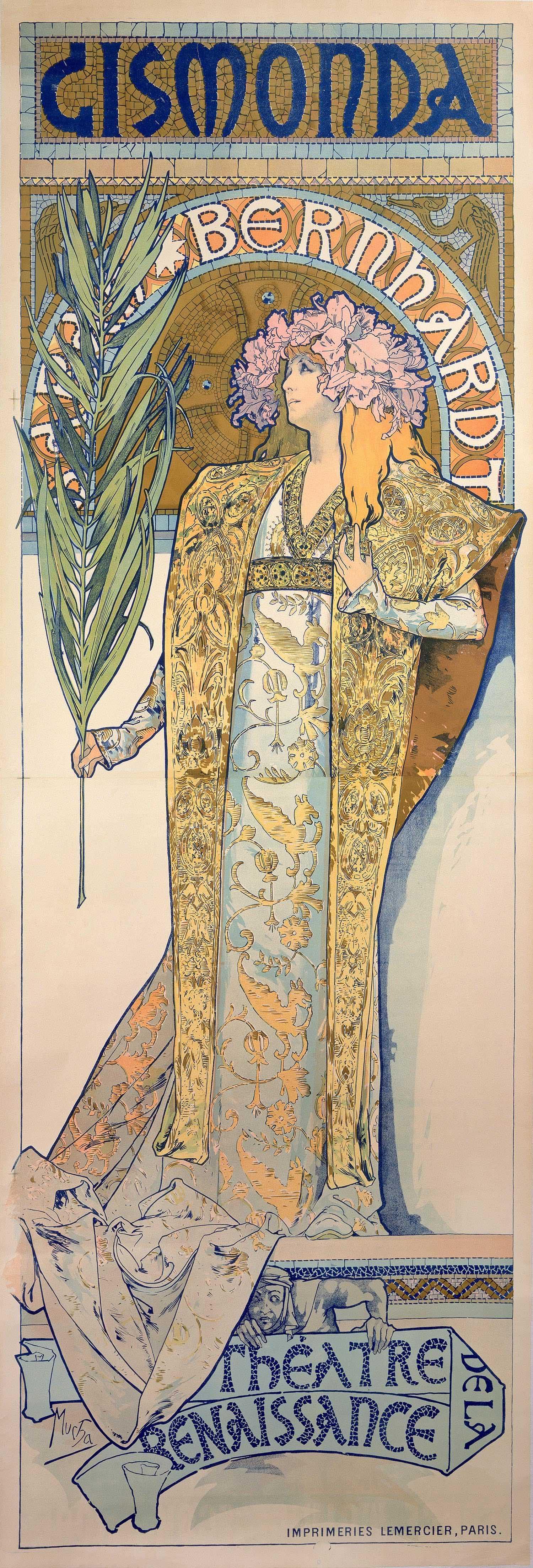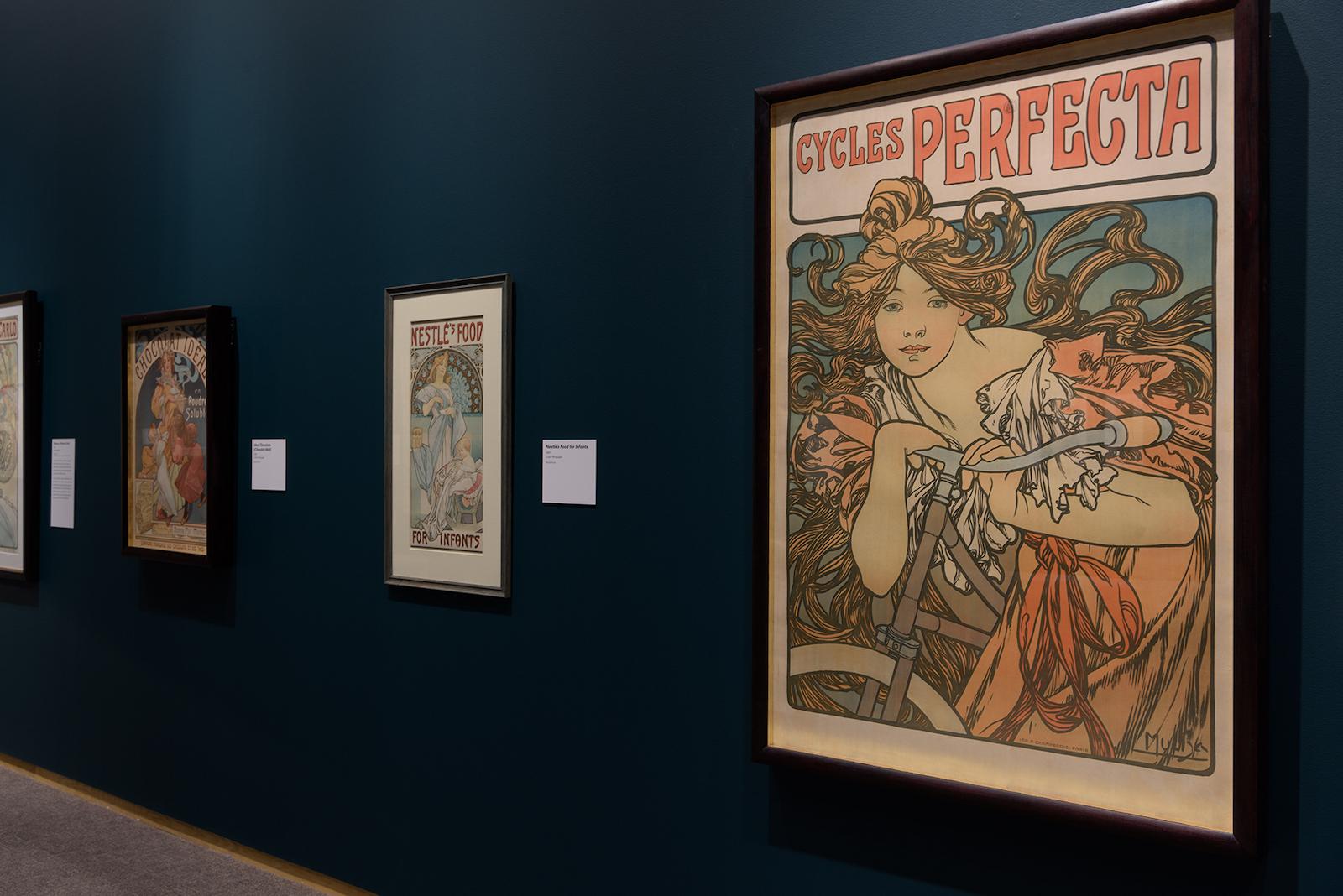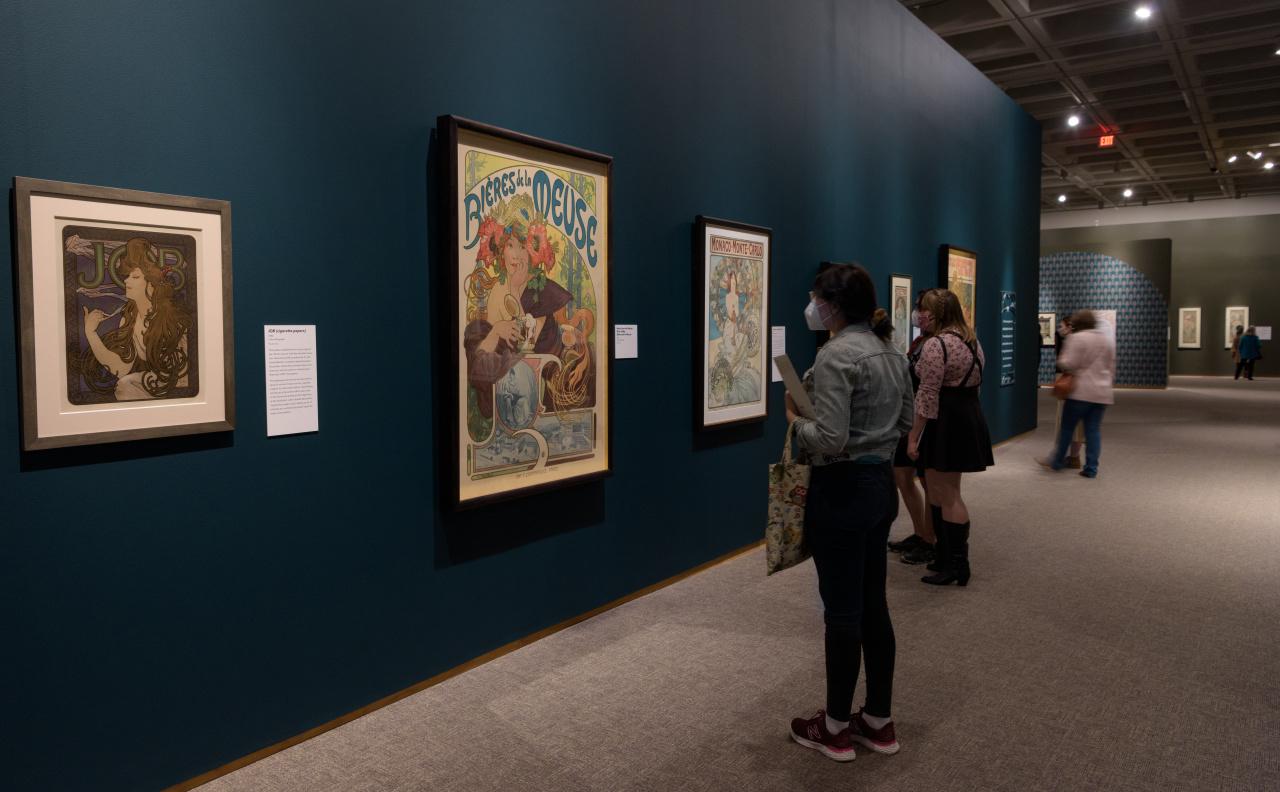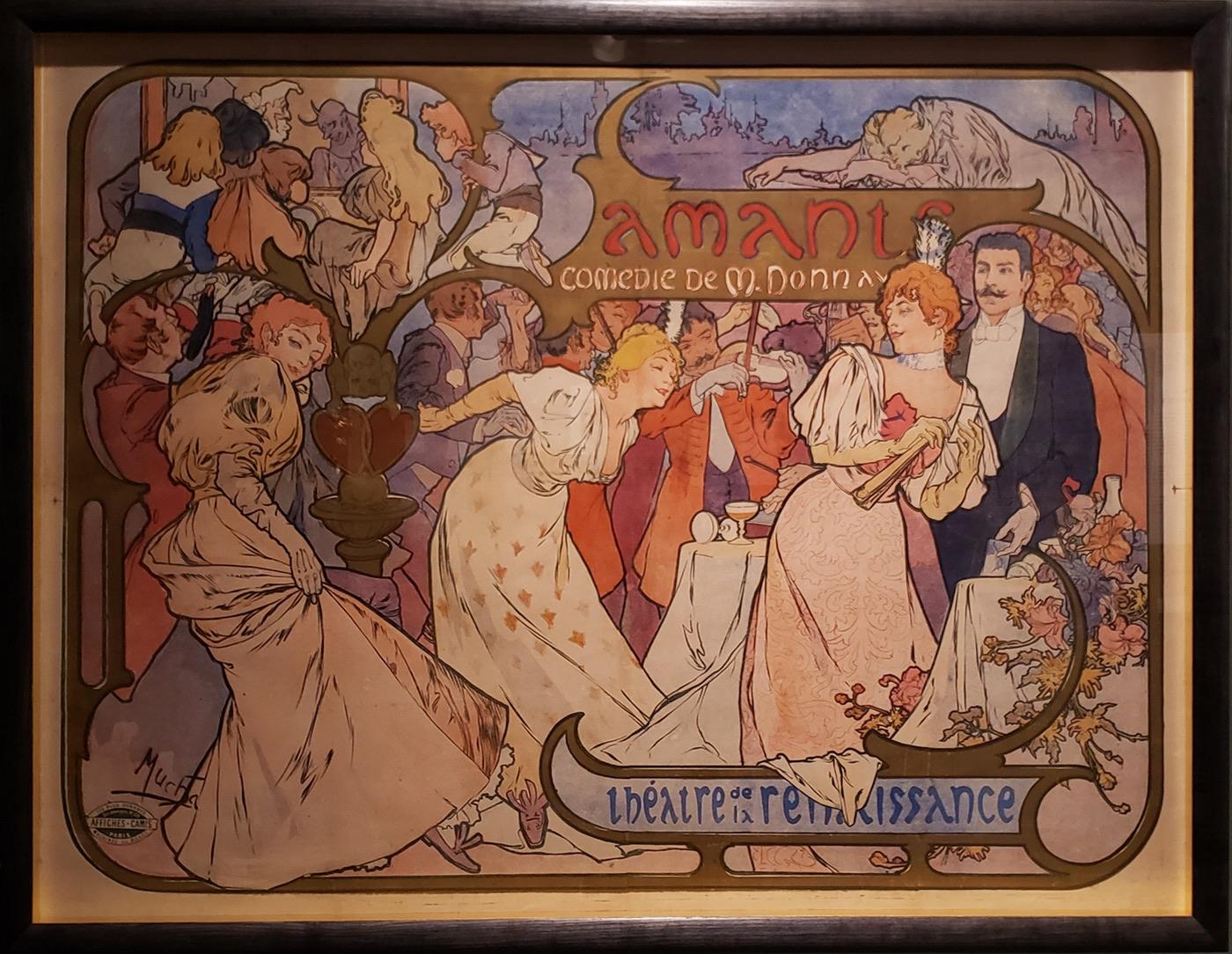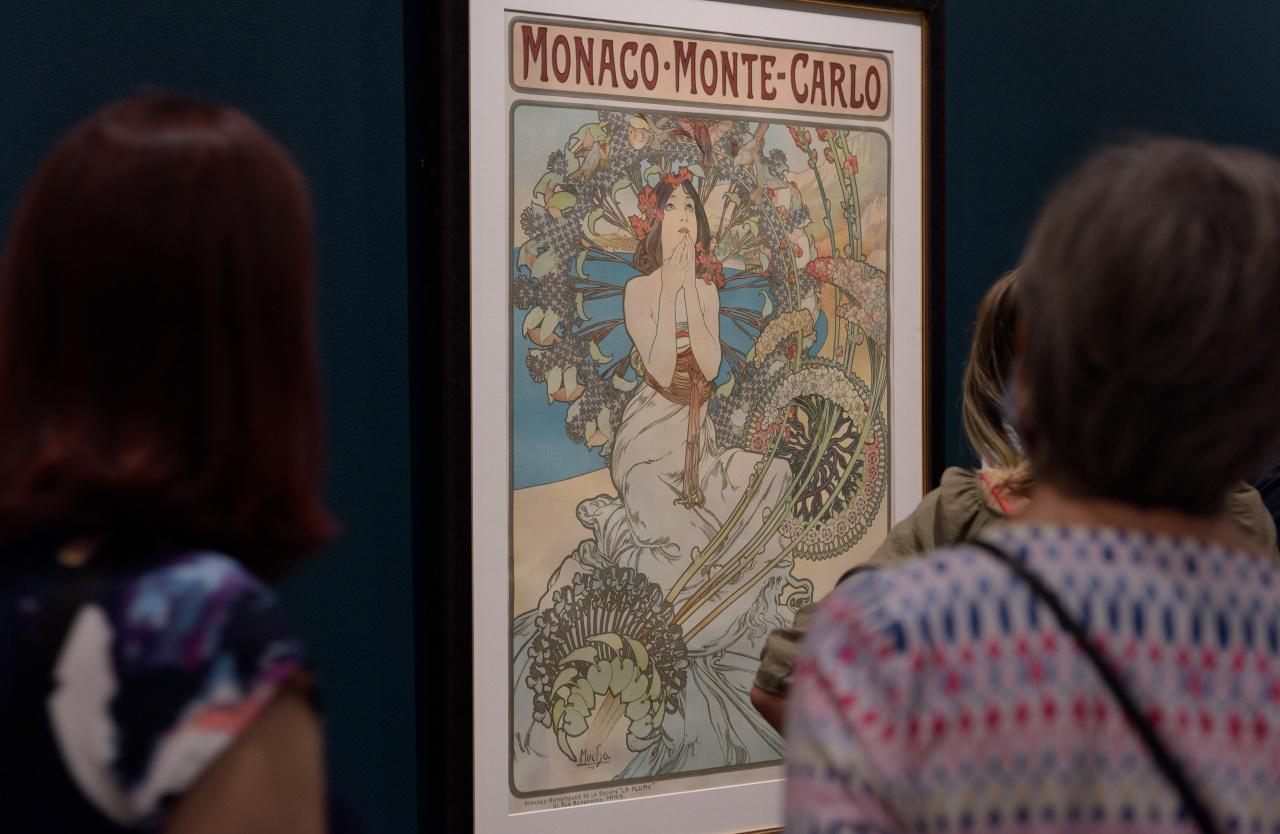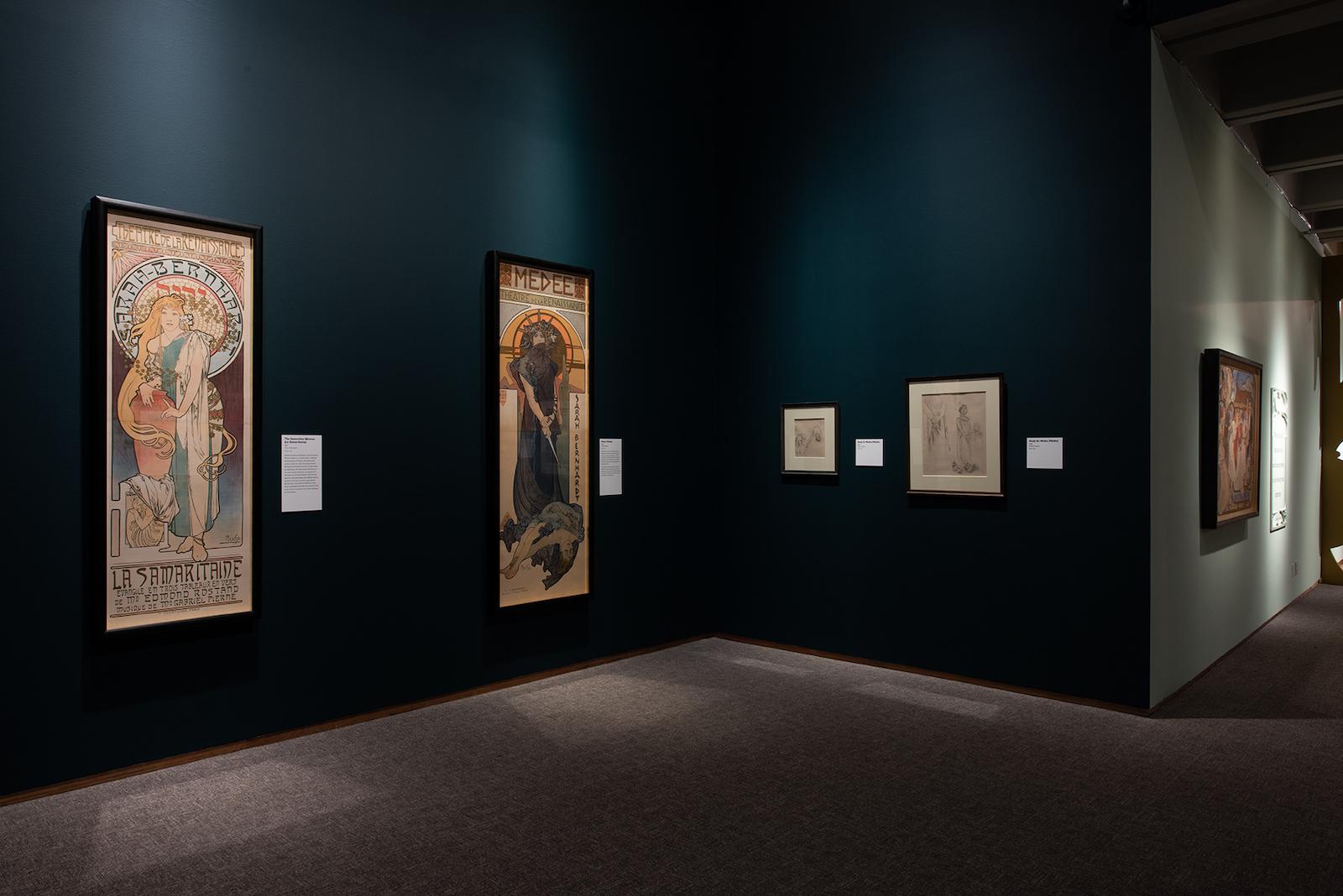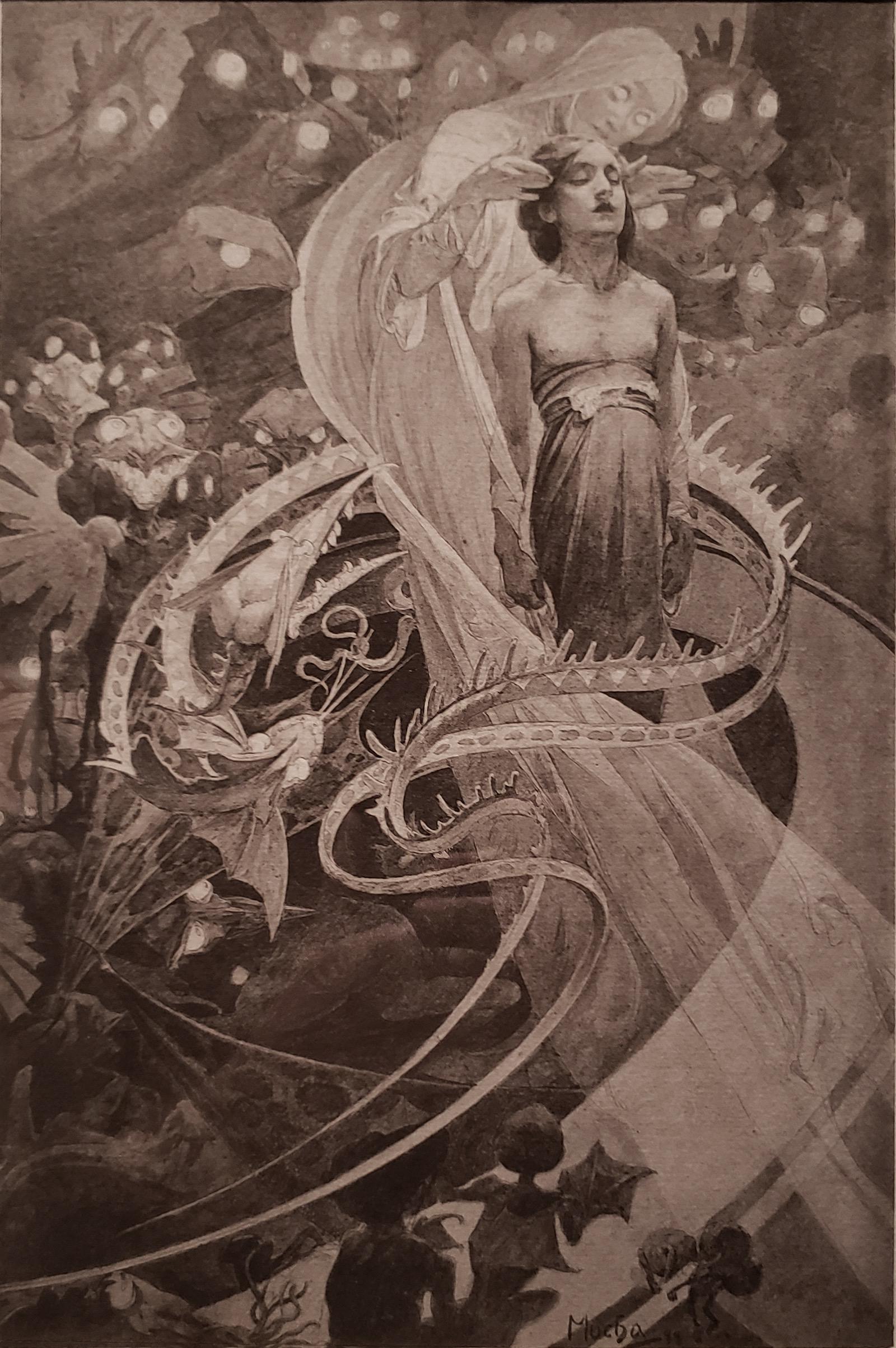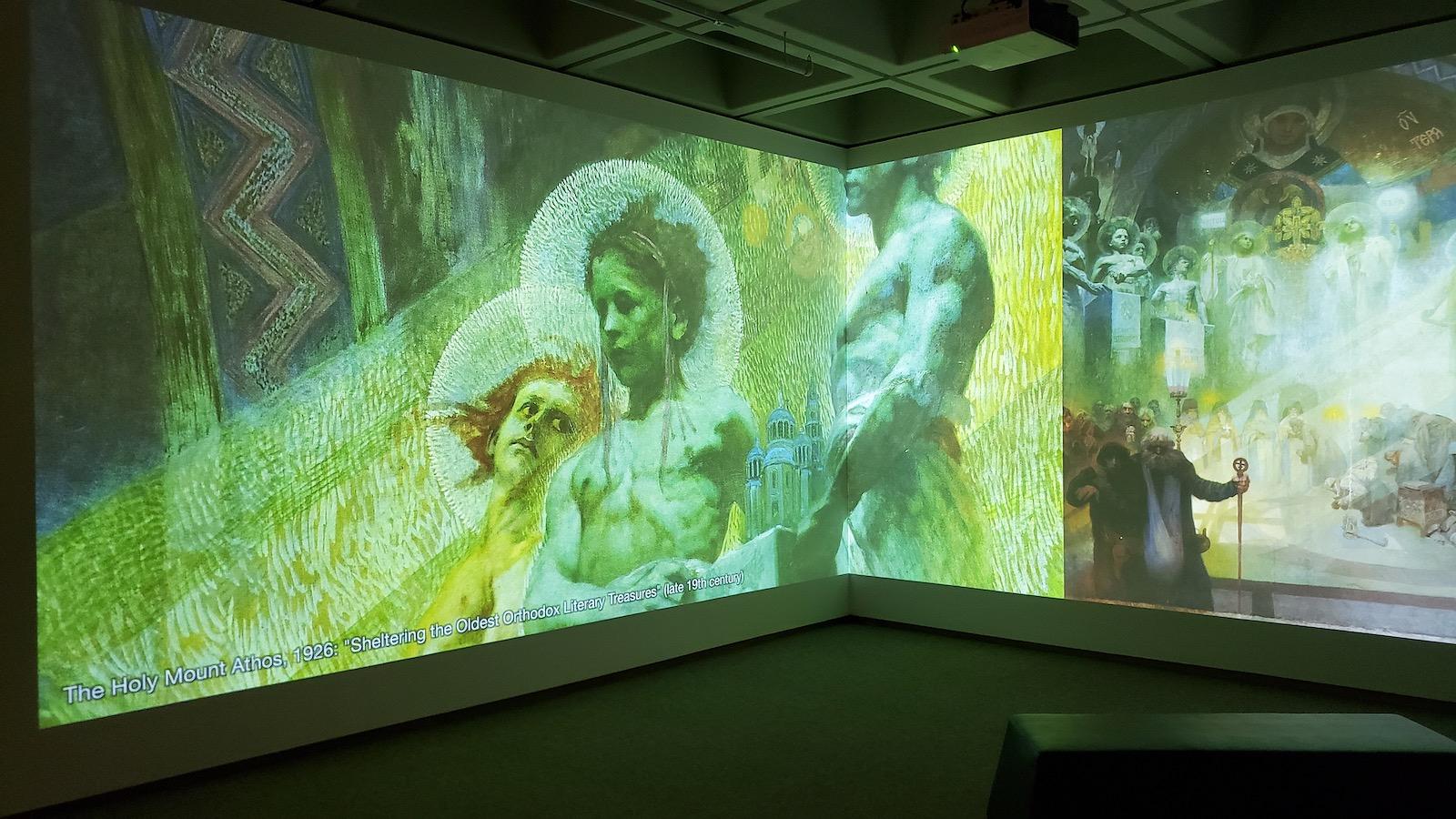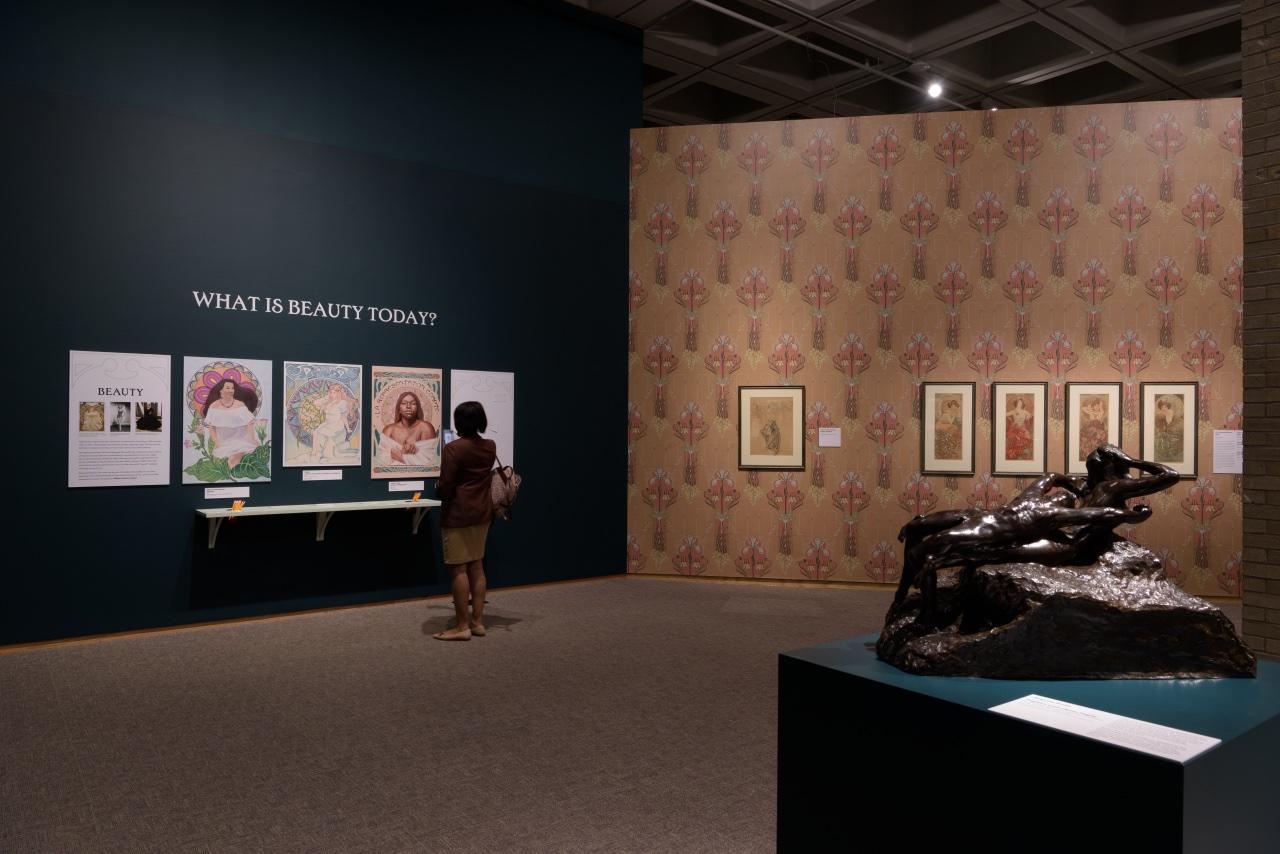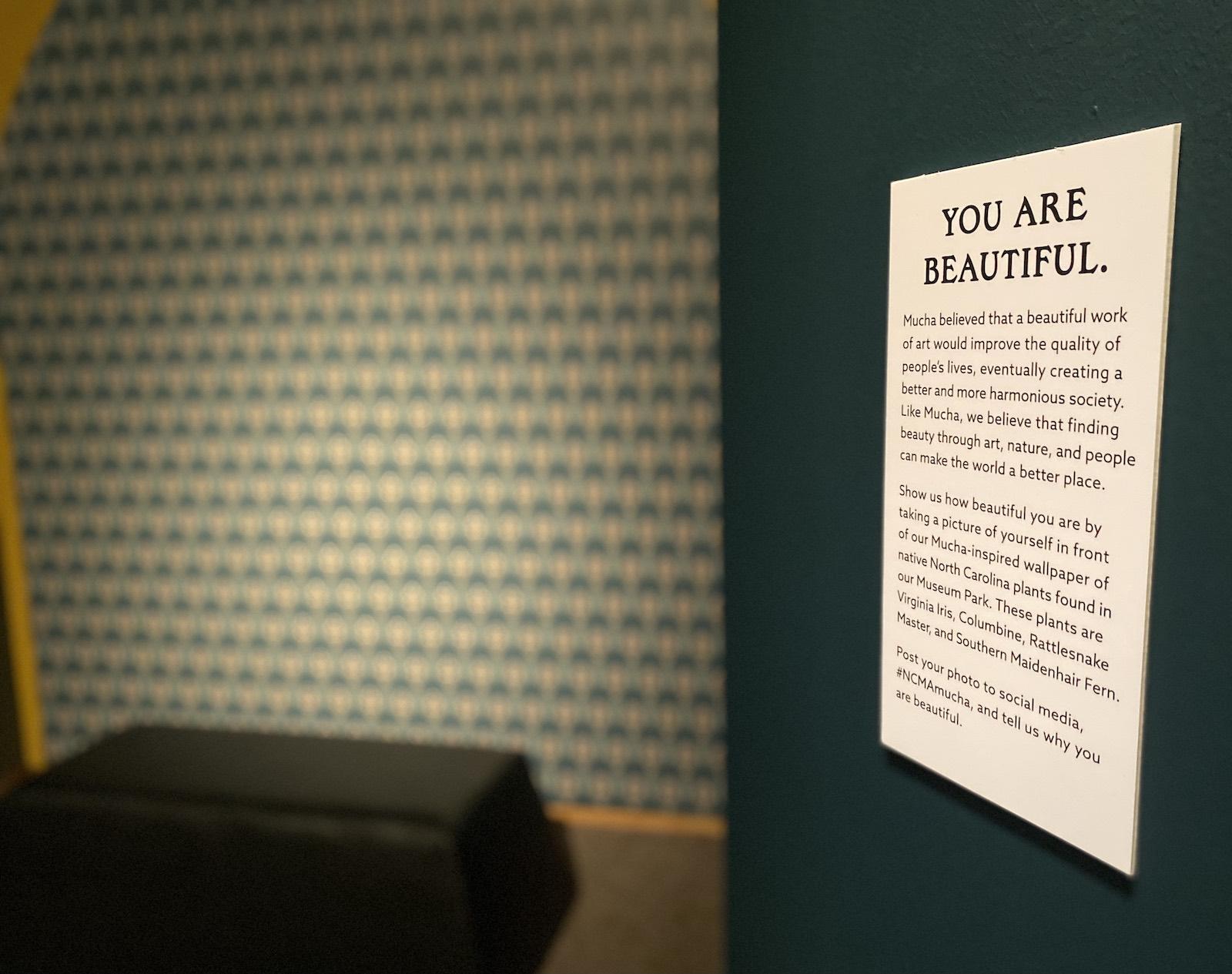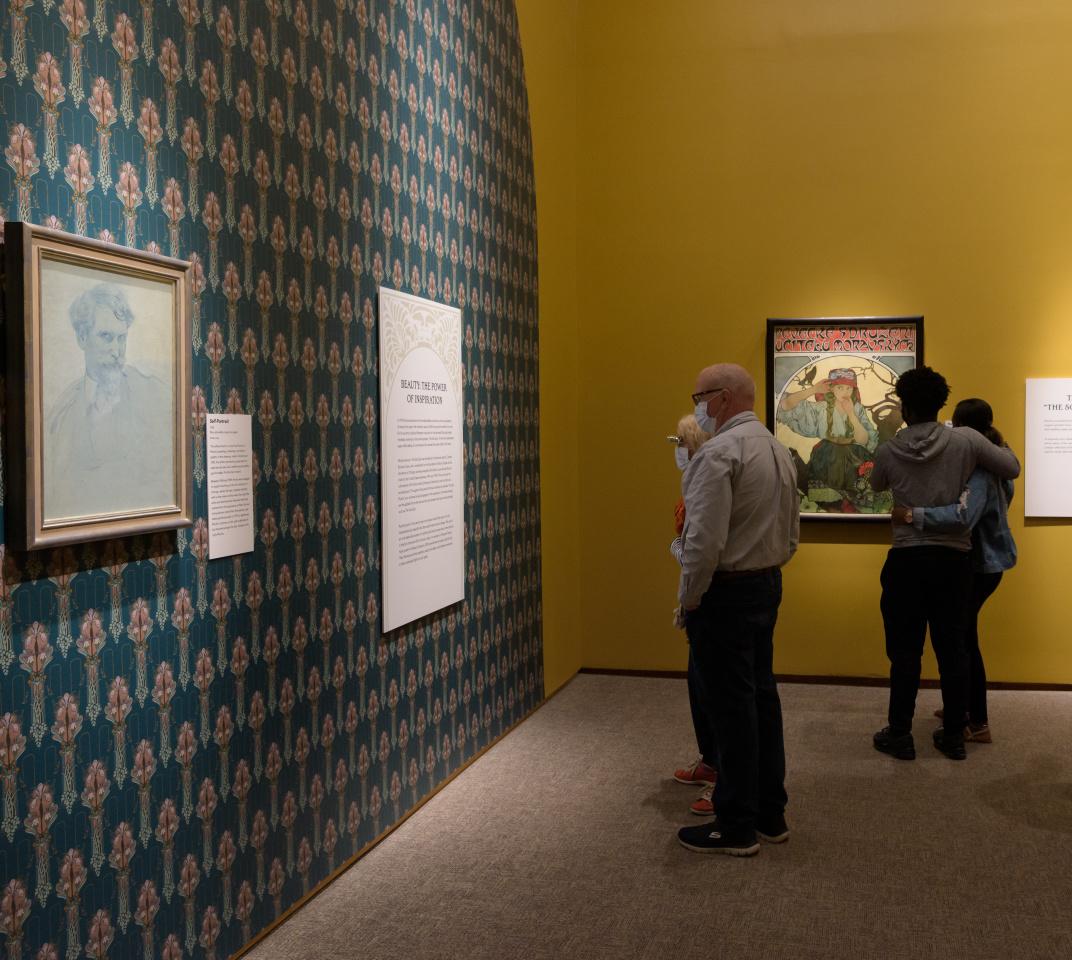Le style Mucha may have contributed much to the Parisian visual aesthetic, but the artist was born in 1860 in the Moravian town of Ivančice. While now part of the Czech Republic, at that time, this region was an occupied Slavic province of the Austrian Empire.
Destined to become one of the preeminent designers of Art Nouveau after he moved to Paris in 1887, Mucha’s contributions to this international art and design style were largely from his Slavic background. His intricate halo-like rondelles, Byzantine-inspired mosaics, lacy floral patterns, embroidered gowns, and other decorative ornamentation were previously unseen in Paris.
Fascinated by a link between Brittany and Czech culture, he also employed Celtic designs, as well as Jewish, Greek, Egyptian, Islamic, Japanese, Rococo, and Gothic motifs.
In a legendary right-place-at-the-right-time story, Mucha was at the print shop when famed actress Sarah Bernhardt sent word that she was seeking a new designer.
After she saw his design for the intricate, life-sized Gismonda (1894) she declared, “Mr. Mucha, you have made me immortal!” Soon, a six-year contract with Bernhardt cemented his own future.
Supporting social reform through art, the artist believed in “art for the people,” considering his posters in the streets as open-air exhibitions. Alphonse Mucha utilized strong contours and minimal values of soft, rich colors. In person, the seams are visible on such sizable lithographs where two pieces of paper were pieced together.





